Hi hivers - Hola hivers
6 days ago I made a post on how to make the Hallacas stew, now we are going to learn the rest of the process in order to obtain the final product, that "wrapper of culture and custom" that characterizes us every Christmas.
The truth is that a Venezuelan spends a Christmas without eating Hallas or eating ham bread is like an incomplete Christmas.
Hace 6 días hice un post sobre como realizar el guiso de las hallacas, ahora vamos a aprender todo el resto del proceso para poder obtener el producto final, ese "envoltorio de cultura y costumbre" que nos caracteriza cada navidad.
La verdad que un venezolano pase una navidad sin comer hallacas o comer pan de jamón es como una navidad incompleta.

The ingredients are:
- 750 gr of chicken (breasts).
- 2 kg of banana leaves.
- 400 gr of raisins.
- 400 gr of olives.
- 500 gr of onion.
- 500 gr of paprika.
- 1 kg of potato.
- oat oil.
- 2kg of yellow corn flour.
- The stew.
Los ingredientes son:
- 750 gr de pollo (pechugas).
- 2 kg de hojas de plátano.
- 400 gr de pasas.
- 400 gr de aceitunas.
- 500 gr de cebolla.
- 500 gr de pimentón.
- 1 kg de papa.
- aceite onotado.
- 2kg de harina de maíz amarilla.
- El guiso.
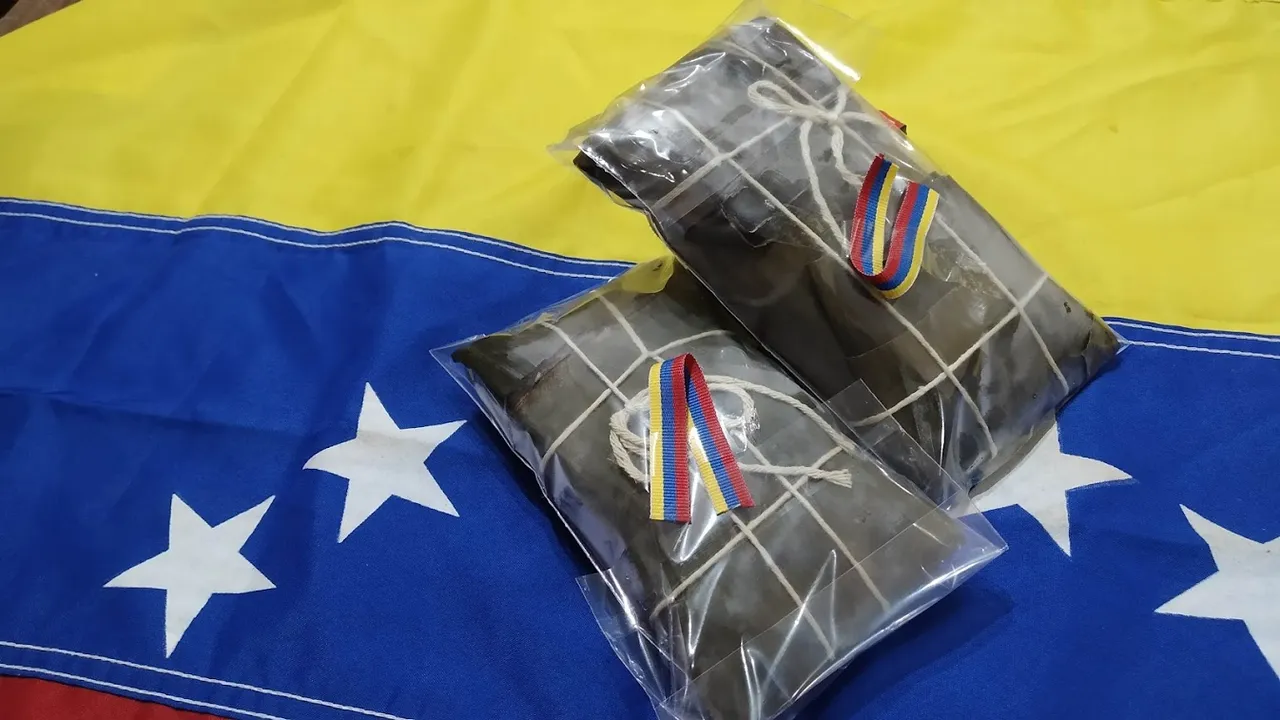
The first thing we must do is boil 1 chicken breast with some vegetables.
Then, we must prepare the leaves, if they are frozen, let them thaw in a regular way and then clean them very well, they are passed through water rinsing any impurities and then they are dried with a clean or preferably new cloth.
The next step is to remove the vein from the banana leaf, with a pair of scissors (the conduit that goes through the center of the leaf), then cut them into medium and large sizes.
The middle sheet will be used to wrap the mass of the halaca and the second sheet to reinforce the halaca so that it does not break during the tying with the wick.
Lo primero es que debemos hacer es poner a hervir 1 pechuga de pollo con algunos vegetales.
Luego, debemos preparar las hojas, si estas están congeladas, dejarlas descongelar de manera habitual y luego limpiarlas muy bien, se pasan por agua enjuagando cualquier impureza y luego se secan con trapo limpio o preferiblemente nuevo.
El siguiente paso es retirar la vena de la hoja de plátano, con una tijera (el conducto que pasa por el centro de la hoja), luego cortarlas en tamaños medianos y grandes.
La hoja mediana será utilizada para envolver la masa de la hallaca y la segunda hoja para reforzar la hallaca y que no se parta durante el amarrado con pabilo.
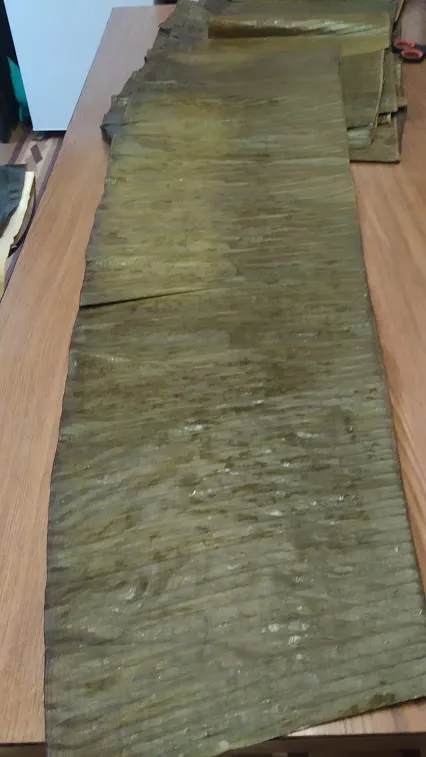
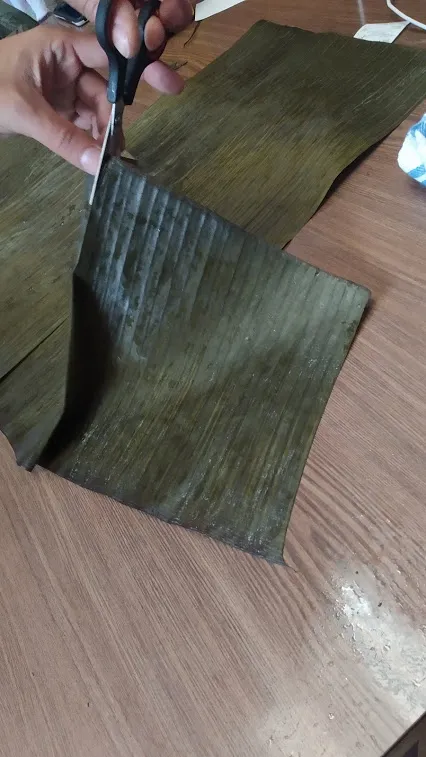
Then the dough is made with corn flour, chicken broth, salt and onoto oil, preferably it is made with yellow flour to achieve that color that characterizes the hayaca.
We must rinse the olives, chop the onion and paprika into slices, divide the breast into strips.
We must also bring the potatoes to a boil and cut them into slices when they cool.
When the dough has already rested for about 20 minutes, it is time to start assembling the Hallas so we will spread the sheets, the large one vertically below and the medium one horizontally above.
Then the top sheet will be impregnated with a ragged oil, in this way we can fold the dough more comfortably.
Luego se hace la masa, con harina de maíz, caldo de pollo, sal y aceite de onoto, preferiblemente se realiza con harina amarilla para lograr ese color que caracteriza la hallaca.
Debemos enjuagar las aceitunas, picas en rodajas la cebolla y el pimentón, dividir en tiras la pechuga.
También debemos poner a hervir las papas y picarlas en rodajas cuando se enfríen.
Cuando la masa ya ha reposado como 20 minutos es momento de comenzar a armar las hallacas así que extenderemos las hojas, la grande de manera vertical abajo y la mediana de manera horizontal arriba.
Luego a la hoja de arriba se le impregnara con un trapo aceite onotado, de esta forma podremos doblar de manera mas cómoda la masa.
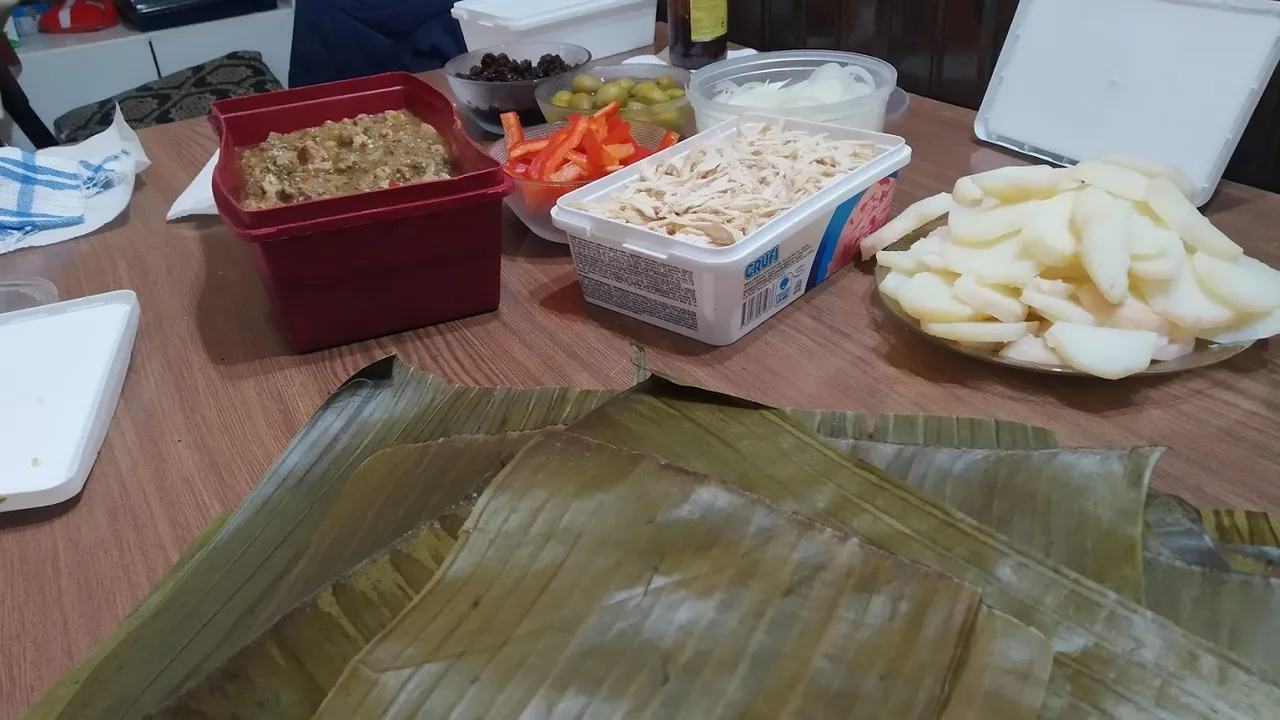
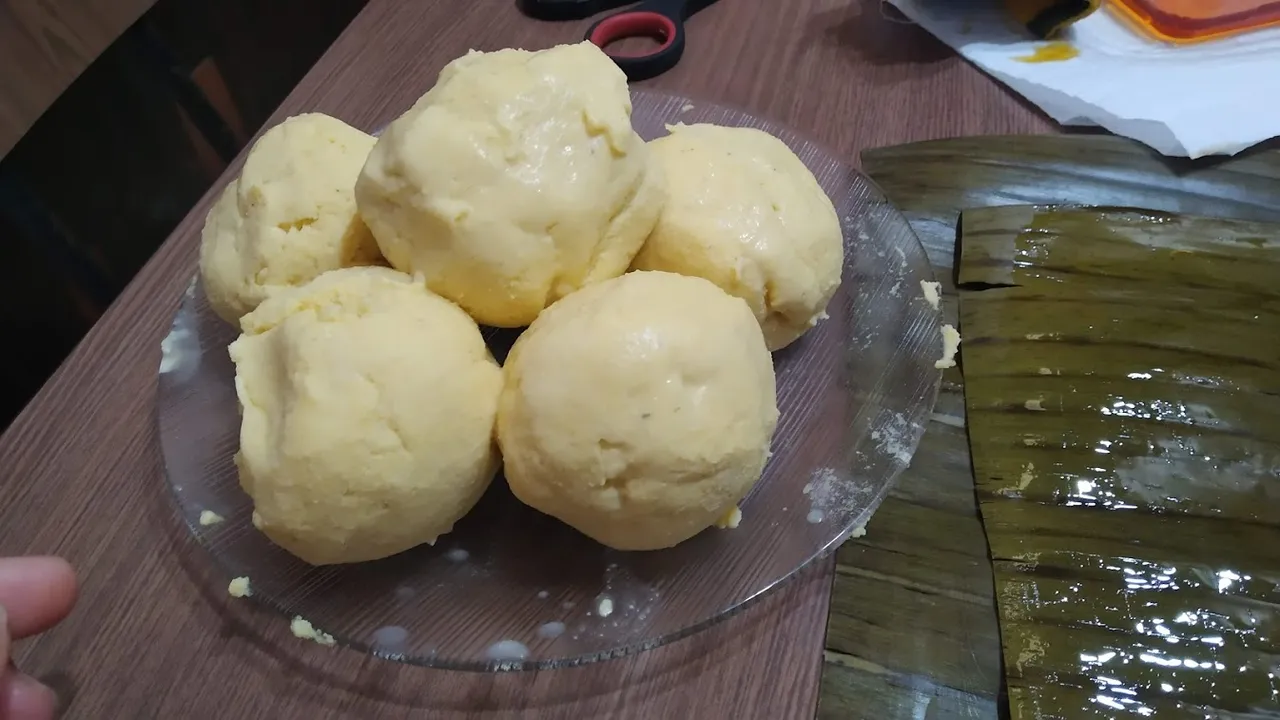
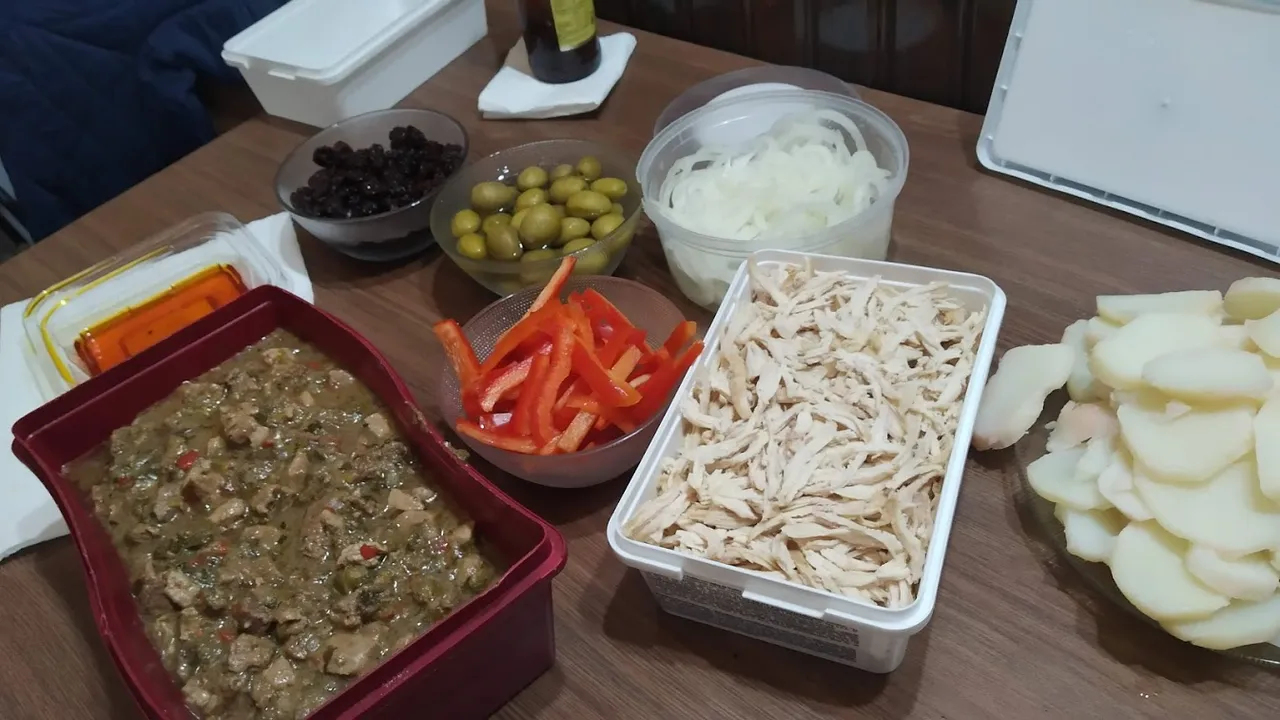
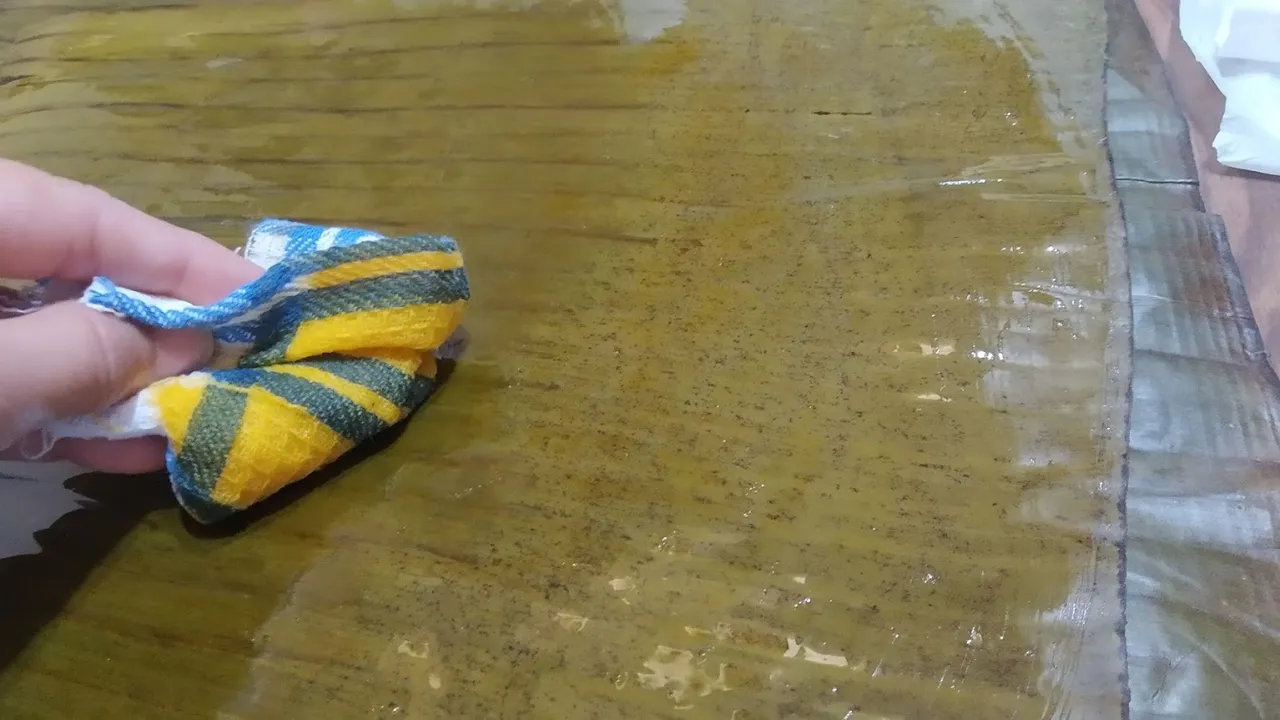
The funniest moment of making the Hallacas has arrived and in which everyone wants to participate, we will spread 1 ball of dough on the sheet that has oil onoted, until it achieves a fine and uniform shape, then we will place 1 tablespoon and a half of stew on all the center of the extended mass.
On the stew we will place a little of all the ingredients that we organized previously, onion, paprika, olives, raisins, chicken and raisins.
You can place them in the order you want, however below I leave a gif of how I have done it.
You start by folding the dough inwards until the Halca becomes a square shape wrapping all the ingredients that we previously put inside.
Finally, with the large sheet, we repeat the process, folding the sheet from the sides towards the center to make it fit and compact.
Llega el momento mas divertido de hacer las hallacas y en el cual todos quieren participar, extenderemos 1 bolita de masa sobre la hoja que tiene aceite onotado, hasta que esta consiga una forma fina y uniforme, luego colocaremos 1 cucharada y media de guiso en todo el centro de la masa extendida.
Sobre el guiso colocaremos un poco de todos los ingredientes que organizamos anteriormente, cebolla, pimentón, aceitunas, pasas, pollo y pasas.
Los puedes colocar en el orden que desees, sin embargo abajo dejo un gif de como yo lo he hecho.
Comienzas doblando la masa hacia dentro hasta que la hallaca se convierta en una forma cuadrada envolviendo todos los ingredientes que pusimos anteriormente en su interior.
Por ultimo con la hoja grande, repetimos el proceso doblando la hoja de los lados hacia el centro para lograr que quede bien ajustada y compacta.
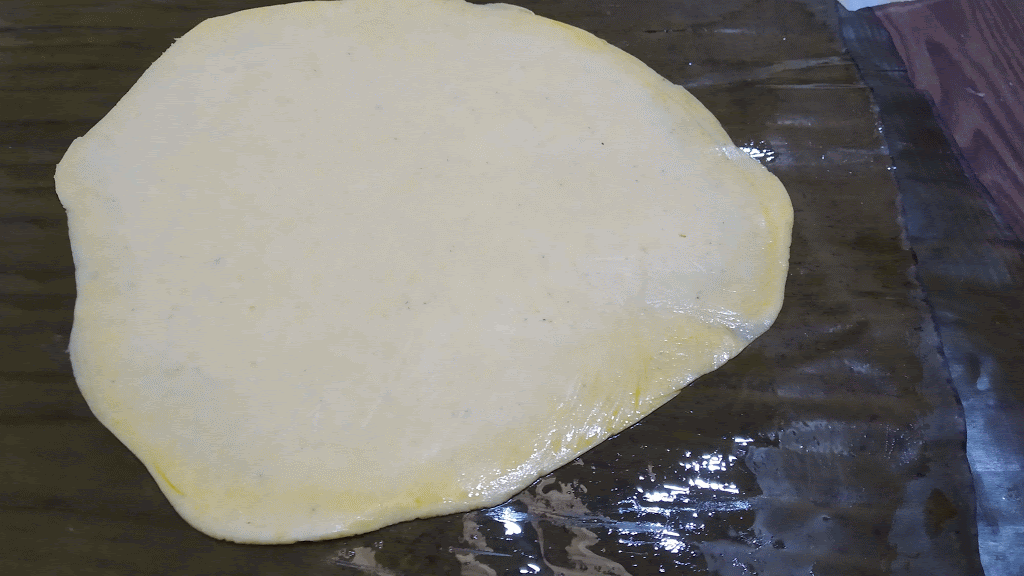
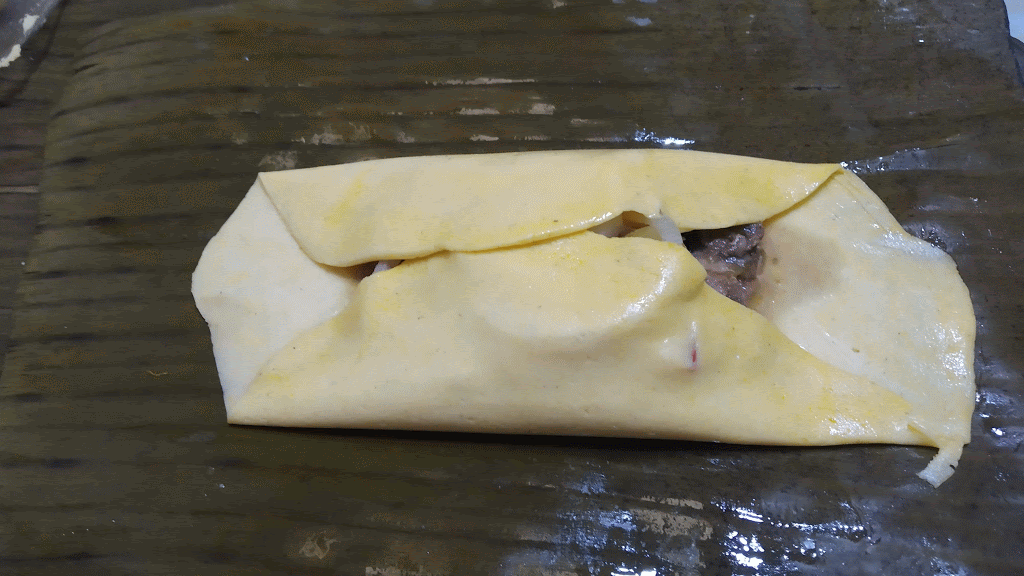
Lastly, we use the wick or white cotton thread, making two horizontal turns and two vertical turns, then we finish with a double knot the tying of the hallacas.
When all our Hallas have gone through this process it is time to cook them.
In a large pot, we put water with a little salt to boil and when it reached the boiling point, we placed the Hallacas in parts, in my pot about 8 Hallacas entered at a time.
These Hallas are left boiling for approximately 25 and then they are removed and put to drain in a place where they will not hit or bend.
When they are cold they can be refrigerated and if they can be kept in a condition to eat for more than 20 days, if they are frozen they could even be eaten after a couple of months.
Por ultimo usamos el pabilo o hilo de algodón blanco, haciendo dos vueltas horizontales y dos vuelta verticales, luego culminamos con nudo doble el amarrado de la hallaca.
Cuando todas nuestras hallacas hayan pasado por este proceso es momento de cocinarlas.
En una olla grande, ponemos a hervir agua con un poco de sal y cuando alcance el punto de ebullición, colocamos dentro por partes las hallacas, en mi olla entraba cerca de 8 hallacas por vez.
Estas hallacas se dejan aproximadamente 25 hirviendo y luego se sacan y se ponen a escurrir en un logar donde no se golpeen ni se doble.
Cuando ya están frías se pueden refrigerar y si pueden mantener en condiciones para ingerir por mas de 20 días, si estas se congelan podrían incluso comerse luego de un par de meses.
With this we already have the Hallacas ready, to heat them we just have to let them boil for 10 minutes, cut the leaves and the wick and it is ready.
It's time to eat!
I hope you enjoy the recipe very much, if you have already made Hallacas at home, I hope you will share the photo with me in the comments and let's talk a little about how cooking customs change in the Hallaca depending on the region of the country.
KISSES!
PS: the first photos we see the packed Hallacas because they are for sale, but it is not necessary to do so, the sheet preserves them in perfect condition, in addition to being a natural and degradable wrapping.
Con esto ya tenemos las hallacas listas, para calentarlas solo debemos dejarlas hervir 10 minutos cortamos las hojas y el pabilo y esta listo.
Es momento de comer!
Espero que disfruten mucho la receta, si ya hicieron hallacas en sus casas espero me compartan la foto en los comentarios y hablemos un poco sobre como cambian las costumbres de cocina en la hallaca dependiendo de la region del pais.
BESOS!
PD: las primeras fotos vemos las hallacas envasadas porque son para la venta, pero no es necesario hacerlo, la hoja las preserva en perfecto estado, además que es un envoltorio natural y degradable.

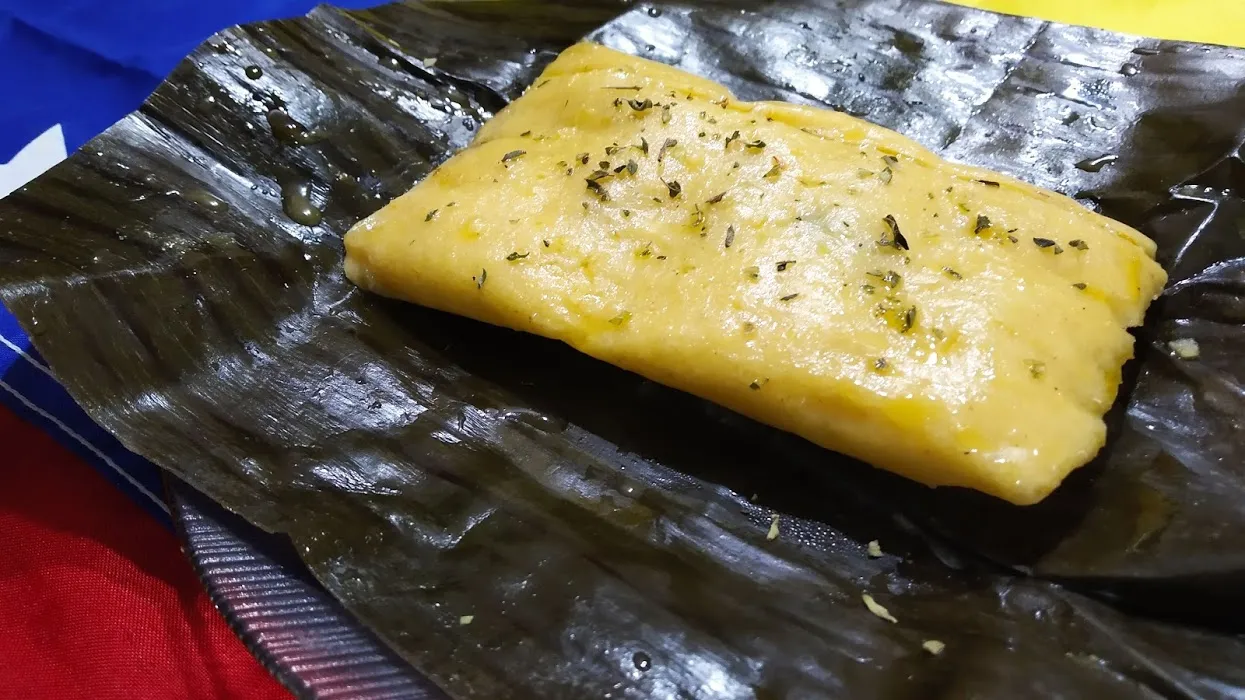


Esto ha sido todo por hoy, si te gusta lo que hago, siente libertad de ayudarme a seguir.
This has been all for today, if you like what I do, feel free to help me continue.
Δ
https://www.paypal.me/carlagonz
Δ
El ingles no es mi idioma natal, me ayudo de traductores para realizar estos post.
todas las fotos son de mi propiedad.
English it is not my native language, I help myself with translators to make these posts.
all photos are my property.
Δ
Muchas gracias por leer.
Ten un bonito y feliz día.
Con amor Carla Gonzalez Venezolana en Uruguay.
Thanks so much for reading.
Have a nice and happy day.
With love Carla Gonzalez Venezolana in Uruguay.








